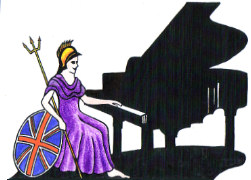Teachers, Accompanists and Piano Entertainers in the UK

UK Piano Page

266 Clyde Street
Glasgow, Lanarkshire G1 4JH
Scotland
Mclaren's is Glasgow's newest piano superstore
3 Canal Street
Paisley, Renfrewshire PA1 2HD
Scotland
P. S. Pianos. A specalist piano shop. Being a
134 Islingword Road
Brighton, East Sussex BN2 9SH
England
Pianola sales and services. Music rolls sales and
Unit 14a, Granary Business Centre
Broad Farm, North Street
Hailsham, West Sussex BN27 4DU
England
Located in the Sussex countryside, we are a family
Orchards Farm
Iden
Rye, East Sussex TN31 7XB
England
Established since 1984, we are situated at the
Music Festival for performers and guests Our 10th
18-06-2022 01:30PM
The Morecambe Bay Piano Group was set up to extend
11-12-2021 02:00PM
The Morecambe Bay Piano Group was set up to extend
08-01-2022 02:00PM
The Morecambe Bay Piano Group was set up to extend
12-02-2022 02:00PM
Polyester and Pianos.
Polyester began as a group of polymers in W.H. Carothers' laboratory. Carothers was working for DuPont at the time when he discovered that alcohols and carboxyl acids could be successfully combined to form fibres.
Polyester as a polish is a three-component paint that utilizes the resin, catalyst and accelerant. Thanks to its tight molecular structure, polyester has a solid content which gives the product superior mechanical and chemical resistance to scratches
The application of Polyester finishes requires specialized equipment and machinery to produce a quality product. Polyester is specified when high scratch resistance and 100% sheen are needed.
Cleaning Polyester on Pianos
For everyday cleaning, wipe your piano with a clean, damp (not wet) cloth, followed by a clean dry cloth. If more stubborn soils do get on the finish, you may try dipping your cloth in a mild soap and water solution before wiping, and then follow that with a cloth dampened in clear water, and then the dry cloth.